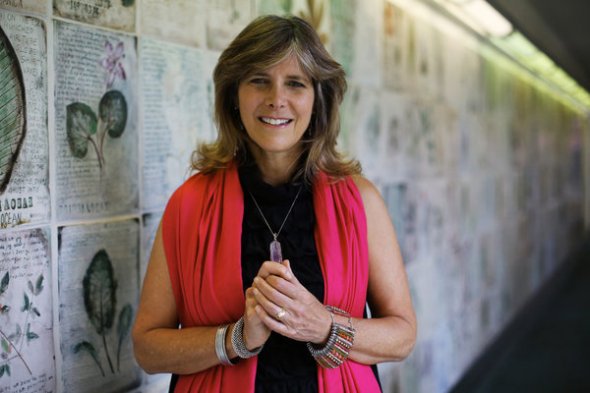IDLEs
Posted: September 29, 2015 Filed under: Uncategorized | Tags: bilateral mastectomy, breast cancer, breast cancer diagnosis, breast cancer research, DCIS, Dr Laura Esserman, IDLEs, National Cancer Institute, Paget Disease 6 CommentsLately, much has been written about the rush-to-mastectomy decisions adopted by women with DCIS diagnoses. DCIS (ductal carcinoma in situ) is the diagnosis given when abnormal cells reside in the milk ducts. It is precancerous and noninvasive. It is not life-threatening, although it can lead to an increased risk of developing an invasive cancer. While it is unquestionably scary to receive such a diagnosis, some in the medical community are questioning whether a slash-and-burn reaction to DCIS is appropriate. The current standard of care for DCIS is surgery and radiation. A natural reaction for a woman with DCIS is to undergo the most far-reaching form of treatment available. I won’t argue with that, because no one has the right to judge another person’s reaction to or decisions toward a cancer diagnosis. Anyone who tries to should be punched in the brain. Repeatedly.
That said, data don’t lie, and the case being made for a less-aggressive approach to DCIS is gaining ground. Dr Laura Esserman, a breast surgeon at the University of California, San Francisco, is setting the pace. In a recent New York Times article, Esserman says her goal is “to move the field and do right by our patients.”
Instead of immediately ordering biopsies for women with unsettling findings on their mammograms, Dr Esserman recommends active surveillance. She favors the “wait and see” approach, speaking out about the myriad ways in which a woman is adversely affected by slash-and-burn treatment for cancers that rarely progress beyond DCIS.
Dr Esserman is bringing to light the fact that mammograms — while valuable — find the slow-growing, non-metastasizing cancers that lead to panic more than they find the most lethal forms of breast cancer. She is lobbying for big changes in the early-detection world and has asked the National Cancer Institute to consider dropping the word “carcinoma” from the DCIS label. Instead, Esserman would like for DCIS to be renamed “indolent lesions of epithelial origin.” IDLE would replace DCIS as the way to describe a stage 0 diagnosis. IDLE is catchy and much friendlier than DCIS, if you ask me.
This woman is turning the breast-cancer world on its head, and I like it. In an era of less face-time with doctors, Dr Esserman spends as much time as needed with each patient, often texting or calling them at home. A big part of her “wait and see” approach to DCIS is asking the patients soul-searching questions and utilizing specific testing to gather further evidence before recommending surgery. She’s pushing for more innovation in clinical trials and for fine-tuning the process of screening for breast cancer. In cases for which she does recommend surgery, Dr Esserman counsels and frets like a family member, and even sings to her patients as they undergo anesthesia. Personally, I’d much prefer a serenade to a prayer before I go under the knife. I can imagine her patients, smiling and relaxed, as they enter the last blissful sleep they will enjoy for a while to come.
I love Dr Esserman. I don’t know her, but I love her. I love that she’s crashing through long-standing views and taking the road less traveled. I believe she will enact great change in the landscape of breast cancer. I wonder how I would have reacted to my own breast cancer diagnosis if mine had lacked an invasive tumor. If my cancer was simply DCIS, would I have chosen a different path? I don’t know, but I do know how scary my diagnosis was. I know that the scorched-earth treatment plan was right for me. I had watched my mom die from cancer at age 67. My kids were still in grade school when “the C word” was applied to me. I wanted to be as aggressive as possible, so my choice was to go balls-out against cancer. And it’s a good thing I did, because my “non-affected” breast turned out to be riddled with cancer. Nothing showed up, though, on any of the screenings. Nothing. When Dr Esserman mentioned that mammograms don’t find the more lethal forms of breast cancer, I nodded my head knowingly and actively talked myself off the roof rather than allowing myself to think “what if?” What if I had chosen a single lumpectomy or single mastectomy, and that smattering of cancer cells and Paget disease in my “unaffected” breast had continued to evade detection? Would I be sitting here, typing this post? Would I be glancing up from my computer to see this guy outside my window?  What if?
What if?


Once again, a very insightful and well-written article. And I agree about punching people in the brain (repeatedly) who would pretend to understand the weight of such a diagnosis.
I’m glad you’re looking at lizards on your window rather than depriving us of your talent, snark, and insight.
i like Dr. Esserman too! I like people you communicate disagreement through discussion, rather that railing against the other side from a mountaintop retreat. You are so right that no one has the right to judge how another person responds to a diagnosis. There is no one right approach, so it’s nice to see an alternative being suggested rather than a replacement. Oh, and is that the Daily Gecko?
Hello, my friend! Long time, no see, I know! Trying to catch up with everyone. 🙂
I am one of those women with DCIS. And it would have been wonderful not to have gone through surgery, radiation and anti-hormone therapy. And Dr. Esserman is obviously a thoughtful & compassionate doctor. But I do take issue with a few important items regarding her wait-and-see approach. Some DCIS is high-grade, which research has demonstrated is the kind most likely to turn invasive. And some DCIS appears in a branching pattern, meaning it occupies a number of ducts, which also indicates a higher probability of turning invasive. And some DCIS includes invasive tissue that is not seen on any diagnostic imaging. And let’s not forget the women initially diagnosed with DCIS who, even after treatment, even after negative follow-up mammograms, are later found to have metastatic breast cancer. The only way to find out for sure what kind of DCIS you have is to get at least a biopsy and sometimes, at least a lumpectomy. And then hope that you have a good pathologist to analyze the tissue, and maybe even get a second pathologist to check it.
Still, the bottom line is that mammography is so bloody last century. Even the 3D mammogram I had a few weeks ago can miss things. I still hold my breath every year. I ended up, after my first diagnostic mammogram, having an ultrasound, a stereotactic biopsy, and a breast MRI before I had surgery. My path report was somewhat ambiguous — I had mixed grade lesions. But I had that branching pattern. And still, after all that, the day I had surgery, and underwent one last mammogram, for the purpose of inserting two wires to bracket the lesions so the surgeon could get them all, the spread of my lesions had evidently spread more, more than had so far been seen on all those previous images.
So, I’m glad I was treated. I’m glad all my various diagnostic images since have been negative for more cancer. I also don’t think it really helps much, if at all, to call DCIS something without the work ‘carcinoma’ in it, because any responsible doctor with a DCIS patient still has to mention the word ‘cancer’ to have any sort of meaningful discussion of what to do or not do about it. But there is no doubt that we still need much, much more accurate screening and diagnostics for breast cancer of any kind. Until then, I won’t feel fully comfortable about a wait-and-see approach for DCIS. Here’s hoping …
Thank you for posting this. It’s an important & difficult issue. Dr. Esserman seems like such a caring doctor, and I know she will continue to contribute her valuable perspective and research efforts on the subject. We do so need more research, always.
xoxo, Kathi
Kathi, I agree with everything you wrote. The idea of renaming DCIS and the wait-and-see approach are both slippery slopes. I’m certain there is no easy answer. So many variables go into each and every case of cancer; as you mention, is the tumor high-grade? does the DCIS branch? is the pathologist able to catch every nuance? is the patient pro-active? Personally, I don’t think I could have chosen the wait-and-see option, if my cancer wasn’t already invasive, because I’m a worrier. However, I’m glad that people like Dr Esserman is exploring options and “moving the field.” Your assertion that we need more research, always, is so very true. Thanks, friend, for your thoughtful comment. xo
And let’s face it: after being treated once for breast cancer, we’re all in ‘wait-and-see’ mode, which is no fun at all, no matter how many years go by. xoxo
[…] of The Pink Underbelly blog profiles Dr Laura Esserman, a breast surgeon at the University of California, San Francisco: […]